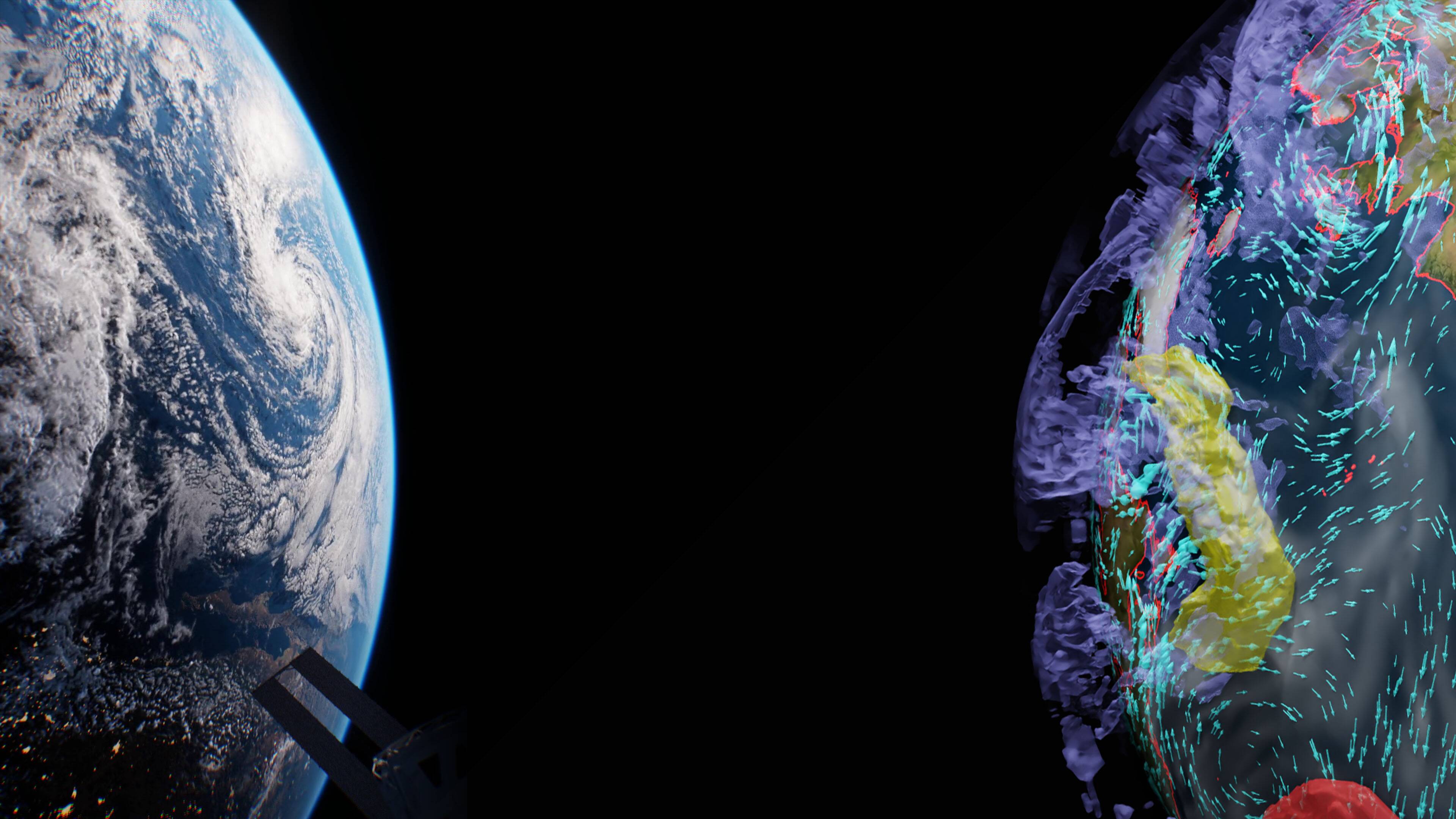Nvidia, Lockheed Team Up To Build Digital Twin Of The Earth For Climate Researchers

When a new National Oceanic and Atmospheric Administration (NOAA) climate simulation tool comes online in 2023, it'll have Nvidia digital twin technology and analytics wares from Lockheed Martin under the hood.
Described by Nvidia as NOAA's first project of its kind, the Earth Observation Digital Twin (EODT) will be a prototype that combines data from a variety of sources to serve as a "one-stop shop" for climate researchers, said Lynn Montgomery, senior research scientist at Lockheed Martin Space.
"Our collaboration with Nvidia will provide NOAA a timely, global visualization of their massive datasets," Montgomery said. Nvidia announced the project at SC22, which runs through this week.
The EODT project, Nvidia said, builds on several initiatives that the company made public prior to today, including Earth-2, Nvidia's planet-level omniverse simulation tool, wildfire analysis tools and Nvidia's Modulus AI framework, software announced in March.
Visualizing the climate
Nvidia said that when EODT comes online in September 2023 it will start with demonstrations of the system's ability to visualize sea surface temperatures. EODT will also be able to visualize data including, but not limited to, "temperature and moisture profiles, sea surface temperatures, sea ice concentrations and solar wind data," the GPU maker said.
- Nvidia bundles enterprise AI software with incoming H100 systems
- Softbank boss Masayoshi Son devotes himself to growing Arm for the next few years
- Alibaba hides 11.11 shopping festival sales figures for the first time
- Arm reports record royalties but total revenues slide
The data itself will be collected by Lockheed's OpenRosetta3D software, which is used for large-scale image analysis and geospatial modeling by groups including NASA. GPU computing instances from AWS will be used for the project, as will on-premises Nvidia DGX and OVX servers.
Nvidia, for its part, will develop one-way connectors that allow dataset snapshots from OpenRosetta3D to be imported into Nvidia Omniverse Nucleus so they can be used as universal scene descriptors (USD), a file format referred to by Nvidia leadership as "the HTML of 3D." That data will be presented in 3D using Lockheed's Agatha 3D viewer software.
EODT "will have a fusion of sensor data, architectural data and AI inferred data all combined with various visualization capacities deployed to the cloud and various workstations," said Peter Messmer, senior manager in the HPC Developer Technology group at Nvidia.
The entire system is being built for NOAA researchers, and the group hopes it can reduce the time required to build complex weather visualizations out of terabytes of data from hours to mere minutes. While initially focused on visualizing climate data, Nvidia said it could be used for other applications in the future as well.
EODT "will help researchers at NOAA, and, eventually, elsewhere, make decisions faster based on the latest available data," Nvidia said. ®
From Chip War To Cloud War: The Next Frontier In Global Tech Competition
The global chip war, characterized by intense competition among nations and corporations for supremacy in semiconductor ... Read more
The High Stakes Of Tech Regulation: Security Risks And Market Dynamics
The influence of tech giants in the global economy continues to grow, raising crucial questions about how to balance sec... Read more
The Tyranny Of Instagram Interiors: Why It's Time To Break Free From Algorithm-Driven Aesthetics
Instagram has become a dominant force in shaping interior design trends, offering a seemingly endless stream of inspirat... Read more
The Data Crunch In AI: Strategies For Sustainability
Exploring solutions to the imminent exhaustion of internet data for AI training.As the artificial intelligence (AI) indu... Read more
Google Abandons Four-Year Effort To Remove Cookies From Chrome Browser
After four years of dedicated effort, Google has decided to abandon its plan to remove third-party cookies from its Chro... Read more
LinkedIn Embraces AI And Gamification To Drive User Engagement And Revenue
In an effort to tackle slowing revenue growth and enhance user engagement, LinkedIn is turning to artificial intelligenc... Read more

